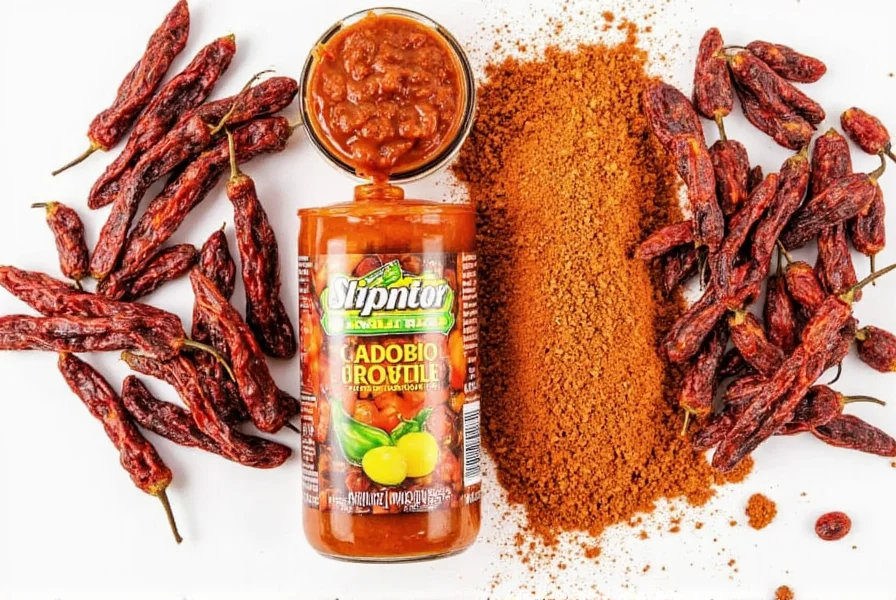Understanding what defines a true chipotle chili pepper begins with recognizing its origin as a fully mature red jalapeño that undergoes a specific smoking and drying process. Unlike fresh jalapeños, which are harvested green, chipotles start with red-ripe jalapeños that have developed their full flavor potential before processing. This critical distinction explains why chipotles possess a richer, more complex flavor profile compared to their fresh counterparts.
The Traditional Making of Chipotle Peppers
The authentic production of chipotle peppers follows a centuries-old Mesoamerican technique. After jalapeños reach full ripeness and turn red, they're carefully smoked over wood fires, typically using oak or hickory. This smoking process, which can last several days, serves dual purposes: it preserves the peppers while imparting that signature smoky flavor. The slow drying at controlled temperatures (usually between 120-150°F) allows the natural sugars in the peppers to caramelize slightly, creating the characteristic deep reddish-brown color and complex flavor notes.

Flavor Profile and Heat Characteristics
Chipotle peppers deliver a unique sensory experience that distinguishes them from other chili varieties. Their heat registers between 2,500-8,000 Scoville Heat Units (SHU), placing them firmly in the medium heat category. However, the perceived heat differs from fresh chilies due to the smoking process, which creates a more rounded, less sharp spiciness.
| Characteristic | Description |
|---|---|
| Primary Flavor Notes | Smoky, earthy, slightly sweet, with hints of tobacco and dried fruit |
| Heat Level | Medium (2,500-8,000 SHU) |
| Texture (dried) | Leathery, slightly brittle |
| Texture (in adobo) | Tender, moist, with sauce coating |
Professional chefs appreciate how chipotle peppers add depth to dishes without overwhelming other ingredients. The smokiness works particularly well with tomatoes, chocolate, and spices like cumin and oregano, creating the foundation for many traditional Mexican sauces and marinades.
Common Forms and Culinary Applications
Chipotle peppers appear in several forms, each suited to different culinary applications:
- Dried chipotles - Whole smoke-dried peppers used for rehydrating in sauces, salsas, and stews
- Chipotles in adobo sauce - Canned peppers preserved in a tangy tomato-vinegar sauce with spices
- Chipotle powder - Ground dried chipotles, sometimes blended with other spices
- Chipotle hot sauce - Liquid condiments featuring chipotle as the primary ingredient
When working with dried chipotles, proper rehydration technique matters. Chefs recommend soaking them in hot water or broth for 20-30 minutes until pliable, then removing stems and seeds before blending into sauces. The soaking liquid contains valuable flavor compounds and should be incorporated into recipes rather than discarded.

Nutritional Profile and Health Considerations
Chipotle peppers retain many of the nutritional benefits of fresh jalapeños while developing additional compounds through the smoking process. They're an excellent source of vitamin C, vitamin A (from carotenoids), and capsaicin, the compound responsible for chili heat that has been studied for potential metabolic and anti-inflammatory benefits.
One tablespoon of chipotle in adobo sauce typically contains:
- Approximately 10-15 calories
- 1-2 grams of carbohydrates
- Negligible fat content
- Small amounts of potassium and iron
Those monitoring sodium intake should note that canned chipotles in adobo often contain added salt, while dried chipotles are naturally low in sodium.
Substitution Options and Storage Recommendations
When chipotle peppers aren't available, suitable substitutions depend on which characteristic you're trying to replicate:
- For smoky flavor: Smoked paprika combined with cayenne pepper (use 1 teaspoon smoked paprika + 1/8 teaspoon cayenne to replace one chipotle)
- For heat and earthiness: Ancho or guajillo peppers (though these lack the smokiness)
- For chipotles in adobo: Create a homemade version by blending rehydrated chipotles with tomato paste, vinegar, garlic, and spices
Proper storage extends chipotle pepper shelf life significantly. Dried chipotles keep for 6-12 months in an airtight container in a cool, dark place. Once opened, canned chipotles in adobo should be transferred to a glass container, covered with oil, and refrigerated for up to 3 weeks. For longer storage, both forms freeze well for up to 6 months.
Debunking Common Chipotle Pepper Misconceptions
Several myths persist about chipotle peppers that deserve clarification. First, chipotles aren't a distinct pepper variety but specifically smoke-dried jalapeños. Second, not all smoked chilies are chipotles—the term applies only to smoked jalapeños. Third, the heat level varies significantly between individual peppers, so tasting before adding to recipes prevents unexpected spiciness.
Understanding what chipotle chili peppers are and how to use them properly transforms ordinary dishes into extraordinary culinary experiences. Their unique combination of smoke, heat, and subtle fruitiness makes them invaluable for creating depth in sauces, marinades, and stews across various cuisines beyond traditional Mexican cooking.











 浙公网安备
33010002000092号
浙公网安备
33010002000092号 浙B2-20120091-4
浙B2-20120091-4